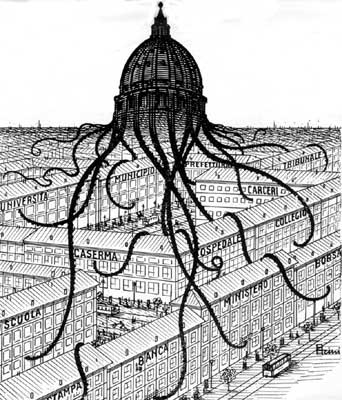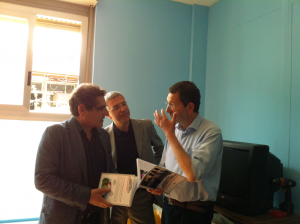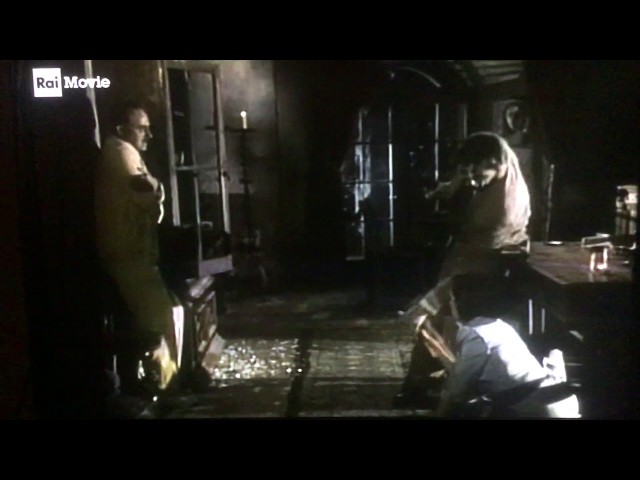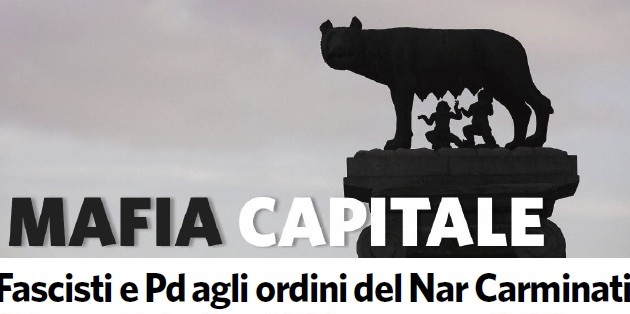
Mafia Capitale: a shocking Christmas gift to Italian people
As I write in the introduction of my book on Berlusconi’s Italy, later that year [2014], we discovered that also Rome was not willing to stay behind [Milan and Venice, in which the ‘Expo 2015’ and the ‘Flood Barrier MOSE’ corruption cases had recently been discovered]. The magistrates, in fact, found out that the Eternal City was controlled and actually run by an up-to-then unknown cupola that was named Mafia Capitale. The mafia system of the capital city was a step up from the original Tangentopoli: like the Venice case, it stated that the cupola was in total control and that the corrupt politicians, who had run the show in the original Tangentopoli, were just puppets in the criminals’ hands. Mafia Capitale also reinforced the idea, suggested by the other recent top scandals, that there is no more moral and practical differences between left and right: the two main bosses were a former fascist activist and a ‘red’ cooperative chief who kept making business both with the right wing and the left wing regional and communal councillors who alternated in power. That’s evolution, I dare say!
This is the shocking story of Mafia Capitale, which has put its hands over the city and it is not willing to let go
Rome: Great Beauty or Big Ugliness?
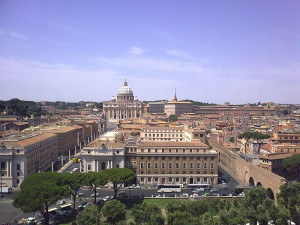
The last time my readers found me walking the streets of Rome was in the chapter of my book titled Corruption, violence, beauty in Italian football – a mirror of society, in which I once again portray another example of the beauty vs horror dichotomy, a leitmotive of my work: It all started in the afternoon after I left my favourite trattoria in Trastevere and decided to take a stroll and enjoy my lazy Roman Saturday afternoon. I crossed the river Tiber, walked through the Isola Tiberina, stopped to enjoy the view I had seen in the final sequence of The Great Beauty and kept walking until I reached Largo Argentina. The chapter in question is dedicated to the Coppa Italia 2014 final at the Stadio Olimpico, Napoli vs Fiorentina. On that night, everyone could see the Napoli ultras boss Jerry ‘the Swine’, Camorra linked, dictating his condition to let the game begin and to maintain public order after the savage riots of the afternoon throughout the town. The scene in itself was a metaphor on who runs the show in the country, and a good introduction to Mafia Capitale.
Now, one year later, I am sitting in the gardens of Castel Sant’Angelo – the Castle of the Holy Angel – built by the Roman Emperor Hadrian as a mausoleum for himself and his family in the II century AD and later used by the popes as fortress and castle. Behind the round shape of the Castello I can see via della Conciliazione leading to the huge piazza San Pietro, whose majestic cupolone at the top of the basilica seems to reach the sky. The sun is setting behind the dome and the surrounding hills and a light breeze from the river tries to cool off the late summer’s heat. And I think to myself, can there be a more beautiful urban landscape than this one? But like almost everything in Italy, beauty soon turns into ugliness: I am attending Romanzo Capitale, a reading event organized by the daily Il Fatto Quotidiano. On stage, three actors and editor-in-chief Marco Travaglio are about to read the transcription of the phone tapped conversations of the protagonists of the Mondo di Mezzo investigation. What lurks under the surface is about to be unveiled and, as I am listening, the tentacles of the piovra seems to stretch from the cupolone and reach, with its deadly embrace, the whole of the Urbe. It is not just a Gothic thrill, this time it is for real.
The story so far
The Mafia Capitale cupola was revealed to the press by by Rome’s chief prosecutor Giuseppe Pignatone in early December 2014. This crime syndicate has been given the ‘honour’ of a real mafia status, even if there are peculiar aspects in the way it operates. The procuratore words are unequivocal: Mafia Capitale is a mafia association which uses intimidation and omertà, dedicated to extortion, usury, money laundering and to the corruption of public officials to gain, directly or indirectly, the management of economic activities, concessions, permits, tenders and public services. Maybe the best description of the organization is given by the boss itself, Massimo Carminati, who defines it as the ‘middle world’, the connecting entity between the ‘upper world’ of rich and important people – ‘the living’ – and the ‘underworld’ of street criminality – ‘the dead’ –, hence the name Il Mondo di Mezzo given to the investigation. The Mafia Capitale network is the trait d’union of those two distant worlds for their mutual benefit, and of course for its own. The cupola corrupts the upper world of businessmen, politicians and entrepreneurs and at the same time helps them to solve their problems through the fast and furious violent ways of the underworld mob. From the underworld point of view, the Roman mafiosi give the small scale criminals opportunities for their lucrative activities. Both corruption and violence are Mafia Capitale‘s key tools, but they prefer the less visible use of corruption to reach their goals, Tangentopoli style, to the more traditional use of violence, mafia style. The ‘mondo di mezzo’ passage has become the most quoted phone tapped conversation of the investigation, a kind of caption of the phenomenon and so, not surprisingly, it is the first extract the actors read at tonight’s event.
Soon after the first leg of the investigation, Maurizio Crozza, maybe the last Italian irreverent stand-up comedian who still runs a TV show (all the others were banned in the Berlusconi Age), read the passage as if it was a lyrical poem in his weekly show on LA 7 titled Crozza nel Paese delle Meraviglie. Later in the programme, he sang the main theme from the musical Guys and Dolls with lyrics taken from the phone tapping of the investigation, and the comic effect was exhilarating. Here is the clip, with Italian subtitles.
[video_player type=”youtube” youtube_show_title_bar=”Y” width=”560″ height=”315″ align=”center” margin_top=”0″ margin_bottom=”20″]aHR0cHM6Ly95b3V0dS5iZS9yd2t4R2JwSkdTRQ==[/video_player]
Mafia Capitale is a very complex affair, but its general form is easy to understand, especially if you live in Italy. Its two bosses, former NAR – Armed Revolutionary Groups – fascist terrorist Massimo Carminati and former convict and now left wing chief of a huge cooperative dedicated to social services Salvatore Buzzi, controlled every single aspect of the capital’s life. They payed monthly salaries to politicians of all parties who sat in key positions in the governments of Rome and of the region Lazio so they could get all the public tenders and could exploit public funds in all aspects of city life and of social care. They earned money on migrants’ camps, on local transport, on garbage collection and so on and so forth. There was no moral strings attached to their behavior, and they were happy they could make more money with the tragedy of migrants and refugeees arriving to Italy from Africa than with drug dealing. Since they could control local authorities, they owned, literary, former mayor Gianni Alemanno, of the extreme right Fratelli d’Italia party, and its councillors. When the center-left coalition won the election in 2013, they said that that was not a problem since they were already bribing some key assessori; besides, the new mayor, Ignazio Marino, and the national politicians didn’t notice that something was deeply rotten in the state of Denmark, to say the least. Paradoxically, the international image of the mafia-run Eternal City has reestablished a more real profile of the town and of Italy in general, stripped of the stereotype of picturesqueness and idyll that we have inherited since the times of the Grand Tour. The New York Times, in its article Italy Gasps as Inquiry Reveals Mob’s Long Reach, state the obvious to Italian eyes: Even for a country where corruption is taken for granted as a part of daily life, the revelations have stunned citizens — for uncovering a wholly new criminal ring smack in the heart of the capital, and for the staggering array of charges involving politicians across the spectrum. The inquiry has blossomed into a national scandal and a reminder that virtually no corner of Italy is immune to criminal penetration. It has also raised fresh questions about Italy’s ability ever to reform itself and fulfill the demands for fiscal responsibility demanded by its eurozone partners. The widespread and unchecked corruption of public money revealed by the inquiry has helped bloat Italy’s national debt to one of the highest levels in Europe.
The first part of the Mafia Capitale inquiry is dated December 2. Here is an extract from The Independent article titled New Mafia group sweeps across Rome sucking hundreds of millions of euros out of Italy’s near-bankrupt capital – Citizens stunned by levels of corruption allegedly involving the collusion of police and secret services:
(…)
“We have identified the criminal organisation that we call Mafia Capitale, which is Roman, without links to other southern Mafias, but uses Mafia methods,” said Rome’s chief prosecutor Giuseppe Pignatone, after he ordered 37 arrests today. Among those held was Massimo Carminati, a former member of the far-right terror group NAR. Prosecutors believe he was leading the group.
Hundreds of others are under investigation, as police seek to establish how far the system of corrupt contracts – including those for migrant reception centres – bribes, kickbacks and extortion has entered the city’s politics, business and administration. Magistrates seized around €200m (£157m) in assets. Gianni Alemanno, Mayor of Rome until June last year, was among those placed under formal investigation for Mafia association and corruption. The Ansa news agency reported that New Italia Foundation, of which Mr Alemanno is president, had received a payment of around €40,000 from Carminati. “I will show I have nothing to do with this,” said Mr Alemanno, 56.
It emerged that Rome’s anti-corruption tsar, Italo Walter Politano, is one of those being investigated for suspected links to Mafia Capitale. He was appointed by Ignazio Marino, the current centre-left Mayor.
Mr Marino said he would fight corruption: “I’ve said and I repeat, that we have barricaded the door to vested interests and murky deals.”
Earlier this year it emerged that a €20bn hole had opened up in the city’s accounts after decades of incompetence and corruption. The city only avoided shutdown thanks to a last-minute cash injection from central government. But then Rome has been bailed out by central government every year since 2008.
In numbers: 1 Former Mayor under investigation – 37 Arrests this week – 100 Suspects in the corruption inquiry – €200m Assets seized today – €20bn Hole in Rome’s accounts after decades of corruption
The second part of the inquiry and the second series of arrests took place in June 2015. Here is a part of the Guardian report titled Politicians among 44 arrested in Italy accused of ties to mob – Councillor from Silvio Berlusconi’s Forza Italia party, with other figures from left and right, suspected of links to Rome gang that rigged public contracts:
(…)
Italian police have arrested 44 people, many of them politicians, suspected of involvement with the alleged leader of a crime syndicate that rigged public contracts in Rome and the surrounding region.
Officers took local politicians from both the left and right into custody on Thursday, including regional councillor Luca Gramazio from Silvio Berlusconi’s Forza Italia party, who is accused of serving as a go-between for corrupt businessmen and the mob.
The investigation, led by Italy’s anti-mafia police, also focused on 21 other suspects whose businesses or offices were being searched. The arrests were the second stage in an inquiry that saw the alleged mob leader, Massimo Carminati, and 36 others, including a former mayor of Rome, arrested in December.
The gang was said to have been illegally involved in recycling and rubbish disposal in Rome, as well as the maintenance of parks and cycling paths and bad weather response.
Police believe that as well as rigging contracts given out by municipal authorities, the network also conspired to skim off cash from centres established to house asylum seekers and recently-arrived migrants.
The gang “by means of corrupt practices and collusion, assured itself numerous contracts and financing from the Lazio region, the Rome municipality and associated businesses”, police said in a statement. …
At this stage, the G.I.P. (giudice per le indagini preliminari – judge for preliminary investigations) of Rome has accepted prosecutor Pignatore and his team’s conclusion in the second leg and has committed 34 people to summary trial. These proceedings have been joined to the first phase, the Terra di Mezzo, so that there are going to be 59 defendants. This trial is starting in November 2015 and has already been called Maxiprocesso by the press, like the one which took place at the end of the 80s in Palermo and that had many high rank mafiosi and politicians condemned for the first time, thanks to the Palermo Anti-mafia Pool of Magistrates led by Giovanni Falcone and Paolo Borsellino, who were later killed by the mafia and have become iconic figures for the ‘moral minority’ of citizens living in Italy.
Forever Tangentopoli – and mafia

In the introduction of my book on Berlusconi’s Italy I write that Berlusconi is perceived, basically, as a corrupter since it is believed that the black money he concealed through off-shore companies has been a means to corrupt everyone he needed to in his climb to richness and power. That is the way he has always operated in business and politics, and it represents in itself an obvious first example of erosion of democracy. To begin with, il Cavaliere’s tale looks like a gangster story… Actually, ‘Berlusconi’s way’ is nothing new under the sun, corruption has always been part of Italy’s DNA, a founding ‘value’ of our national identity. In 1992, there was the greatest investigation ever launched on Italian corruption named Mani Pulite – Clean Hands – established by a pool of tough ‘untouchable’ Milan magistrates. Milan was then called Tangentopoli – Bribe City –, a word later used to identify the corrupt system Clean Hands had uncovered. But the system was there long before, clearly pointed out in a neo-realism movie of the golden age of Italian cinema, Francesco Rosi’s 1963 Mani sulla Città – Hands over the City – in which a ruthless Neapolitan land developer and elected city councilman manages to use his political power to make personal profit in a large scale suburban real estate deal. The film, besides, is also an example of a pre-Berlusconi conflict of interests.
Berlusconi’s rule helped the spreading of crooked business since il Cavaliere as Prime Minister was both actual and philosophical guarantee of non-punishment for illegality. But just to prove it beyond reasonable doubt in February 2014 the European Commission issued its first Anti-Corruption Report that stated that half the amount of corruption in the EU – 60 billion euros – is Italian, as I discuss in part three, chapter one of my book.
In order to give further indisputable evidence of the commission’s report, sticking to very recent episodes, two maxi corruption scandals, precise updated blueprints of the original Tangentopoli, exploded in May and June 2014. The first is linked to the 2015 Milan Expo, setting the crime scene in the same city and with the same protagonists since, almost unbelievably, some of the people that were arrested are the very same who ended up in jail in 1992, in the Clean Hands period, a paradox which is only apparent. In June, another corruption scandal, a Tangentopoli bigger than the 2015 Expo’s, exploded in Venice, revealing that behind its world famous gondolas and Renaissance palaces the Serenissima – Most Serene City – and all its institutions were owned by a criminal construction company which, like Rome today, had literally spread their hands over the city during Berlusconi’s ventennio. The MOSE scandal in Venice – a decade long construction of a flood barrier to save the Serenissima from sinking – is a corruption case that took place in the rich hard-labouring God-fearing North-East, an area that, socially speaking, is still deeply Victorian, with its façade perbenismo, its fake respectability and its hypocrisy.
Mafia Capitale adds little to the well established script of Italian corruption. It is as if Rome, the capital, was not willing to stay behind, after Milan and Venice in the North had had their notoriety and Palermo, Reggio Calabria, Naples and Bari in the South, the capitals of the mafia infested regions, were proudly maintaining their fame. Mafia Capitale has added symbolical value, making the Eternal Urbe a more visible metaphor of the country, as I have previously stated.
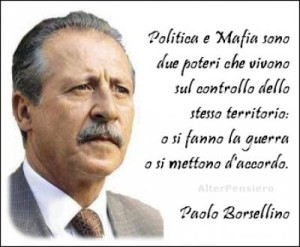
1992 is a key year in Italian contemporary history. Mani Pulite caused the destruction of traditional political parties creating a political vacuum. It was also the year of the killing of the two most important figures of the anti-mafia pool of Magistrates I mention before, Falcone and Borsellino, who had declared war to the mafia in the previous years. After the so called Maxiprocesso, the Corleonesi had proclaimed war to the State with a series of unprecedented slaughters throughout the country. Without the traditional political connections and with a pool of magistrates behind their backs, the mafia launched the greatest battle against the state which ended after a new agreement with the institutions was found. This is the beginning of the ‘trattativa Stato-mafia’ – State-mafia negotiation –, an event still partly obscure (the first trial for this event has recently began). One thing for sure, some top representatives of the State accepted to negotiate with the mafiosi, a morally unacceptable attitude for a democracy whose ultimate result was to carry the mafia deeper in the heart of the State. This is also the period of the birth of Berlusconi’s party Forza Italia. Taking advantage of his alleged previous relationship with the mafiosi (Forza Italia founder, Berlusconi’s best friend Marcello Dell’Utri, is now in jail for mafia association), Berlusconi offered the crime syndicate what they were looking for. The mafia violence came to a halt, il Cavaliere won the elections with the alleged criminals’ help and a new pax mafiosa began.
Berlusconi’s rise and fall looks like a gangster movie we have seen so many times, but no Scarface has ever entered politics at its higher levels, in a position in which he would have to chase himself, robber and cop in one person. The second part of my book is a sort of ‘crimes and misdemeanors’ biography of il Cavaliere, a ‘true crime’ story that comes across mafiosi and gangsters and that inevitably becomes an excursus on the last twenty years of Italian history, with its dark secrets, its forbidden links between State and the mafia, its violence, its fascist nostalgia. The final point is that the criminal attitudes in Palermo and Milan were two branches of the same tree, two intermingled aspects of Italian illegality and corruption. Mafia Capitale brings the two elements together like never before: Mafia Capitale is a mafia association which, as I have said before, uses Tangentpoli‘s corruptive system.
Fascist legacy
Mafia Capitale is not only fascist nostalgia, it is fascism. As for corruption, the Italian post WW II period is filled with more than fascist nostalgia, it is full of fascist violence, slaughters and organizations that tried to go back to the Mussolini ventennio. Italian post-war history is crammed with fascist terrorism on the one hand and the violence of the Red Brigades on the other in the 70s, the ‘lead years’; it is packed also with faithful and unfaithful (‘deviati’) secret services, a State organization which operated to lead State investigations to dead end tracks or to wrong directions to hide a truth which could not be revealed, basically the fact that part of the State was collided with fascist terror. The vilest terror acts of the 70s, like the iconic Piazza Fontana slaughter, came to be called ‘stragi di stato’ – ‘state slaughters’. On an international scale, this period also had another aim: to keep the biggest communist party in Western Europe out the government in a West-East borderline nation in the period of the Cold War, whatever the price.
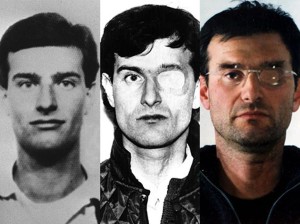
Carminati, the mastermind of Mafia Capitale, is the personification of this tendency, a former fascist terrorist turned mafioso and gangster. No fictional character could have been fitter for the role:
Massimo Carminati, a former member of the fascist terrorist gang Nuclei Armati Rivoluzionari (NAR) is a shadowy character from Italy’s recent past. His name echoes in the cases of the vile murders of Valerio Verbano (a Roman member of Autonomia Operaia), Fausto Tinelli and Lorenzo Iannucci (early members of the Leoncavallo social center in Milan), all of whom were inquiring about fascist activities and connections in business and politics. He was also involved in the cover-up of the Bologna Station massacre, in which his fellows Valerio Fioravanti and Francesca Mambro detonated a bomb that killed 85 people and wounded more than 200 [in 1982], and in the murder of the controversial journalist Mino Pecorelli [in 1979]. He then joined the Banda della Magliana (being iconized as “The Black” for his role in connecting it with fascist groups) and was involved in a number of swindles, burglaries and other offences (featuring other mafia syndicates and power brokers) but he has always been cleared from accusations or given very light convictions (The Neofascist Mafia Hands on Rome, www.infoaut.org)

Indeed, Carminati inspired the character called The Black – because of his political creed – in judge De Cataldo’s 2002 noir novel Romanzo Criminale that portrays the shameful relationship between criminality and corrupt high officials of State in Italy during the ‘lead years’. In 2005, Romanzo criminale – Criminal Novel – became a highly acclaimed criminal drama film directed by Michele Placido. The plot is inspired by the Banda della Magliana true story. The Magliana Gang was one of the most powerful Italian criminal associations, dominating Rome’s drug, gambling and other kinds of crime activities from the early 1970s to the early 1992 thanks to their mafia style strategies. From the 1970s the gang started dealing with the Italian secret service, fascists, terrorists, the Sicilian mafia, the camorra and other criminal entities. Carminati The Black is the character who joins the non-political criminality with the nazi/fascist one. Some gang members are still alive: some are in prison, others have become justice collaborators. In 2008 and 2010 a TV series titled Romanzo criminale – La serie, seasons 1 and 2, was released by by Sky Italia and broadcast on Fox Crime, Sky One and on Sky Arts with English subtitles in 2012.The first series quickly achieved cult status in Italy. Mafia Capitale is already there, for everyone to read and watch, long before procuratore Pignatore started his quest. As for almost all Italian criminal scandals, we pretend we just don’t see, especially the majority of the politicians who never notice what goes on around them or keep turning their heads, an attitude very similar to omertà.
Happy together: bipartisan corruption
As for the Milan Expo 2015 scandal, Mafia Capitale has definitively proved that the moral distinction between the right politicians, in Italy traditionally linked to corruption, and the left ones, whose moral superiority and ethic behaviour was claimed even in the Tangentopoli case, is now gone. Mafia Capitale’s other boss, Salvatore Buzzi, is another ‘fictional character’, a former convict for murder who repents and builds up a Cooperative enterprise, linked to the left and dedicated to social care. Behind that Dickensonian character a vile villain has been uncovered, a criminal who was not in the least embarrassed of his partnership with Carminati. The papers of Mafia capitale 1 and 2 are filled with people from the Partito Democratico, whose roots are in the Italian Communist Party, an organization which made many mistakes but was also the first one to set itself free from the USSR deadly embrace and to try and find a terza via – a third way – between the Russian regime and the evils of contemporary Capitalism. The Partito Comunista was never involved in a scandal of this kind and its most prestigious leader, Enrico Berlinguer, launched the questione morale – moral question – in the 70s and it is inconceivable to see him dining with mafiosi or gangsters like today’s Democrats (as I’ll show in a minute).
Sleeping Hollow politics
“C’è un garantismo peloso e ipocrita che è nato nella deprecata Prima Repubblica, e cioè non si interviene prima che ci sia una sentenza passata in giudicato; il che ha voluto dire, negli anni, mai. Renzi ha assunto lo stesso modello” – There is a hypocritical hairy defense of civil rights that springs from the deplored First Republic, that is there must be no intervention before a definitive verdict; which, in the course of the years, has meant never. Renzi has adopted the same model – said professor Stefano Rodotà, an internationally high-acclaimed constitutionalist and former PD’s MP and MEP. The day after the discovery of Mafia Capitale there was a dramatically hilarious political comedy of errors played by the bipartisan politicians involved directly in the case and by the national leaders of almost every party except the Movimento 5 Stelle, which has made of legality a stand point of its own. Former mayor Alemanno stated that ‘maybe he had chosen the wrong team without realizing it’, today’s mayor Marino proclaimed himself as the gladiator of a new legality while his councillors were falling like toy soldiers next to him, PM Matteo Renzi has assumed the garantismo peloso attitude that was a must for Silvio Berlusconi. He appointed the party president as special Roman Democratic Party‘s commissioner and employed a new prefect to share the city leadership with the mayor, so that now there are two consoli like in pre-Empire Ancient Rome. It is as if we were inside a Crozza nel Paese delle Meraviglie episode, but all this is dramatically for real.
And to envision all this with an image, since every picture tells a story, the following photo was published by the weekly L’Espresso. The title reads: From Poletti to the PDL [People of Freedom, Berlusconi’s party] everybody at dinner with the clan’s boss. A photo tells the power of Mafia Capitale – In 2010 Carminati’s right arm, Salvatore Buzzi, organized a dinner to thank “the politicians who are next to us”. From Rebibbia [Rome’s jailhouse] to the Palace, the unbelievable career of a former model convict who became the dominus of a cooperative worth 60 million euros.
Buzzi (8, the host, chief of his ’29 giugno’ Cooperative, arrested for mafia) is sitting next to Alemanno (7, then mayor, now investigated for Mafia Capitale). All around them the ‘best minds’ involved in Mafia Capitale, equally divided between left and right: Panzironi (3, arrested in the investigations, former chief of the Municipal Society for the Environment), on. U. Marroni (4, PD’s MP), Ozzimo (5, former Marino councillor, accused of corruption), A. Marroni (6, garante Lazio prisoners). Last but not least, Casamonica (1, boss of the Rom clan), whose family name would soon make the headlines. Among this noble company, today’s Minister of Labour and Social Policies Poletti (2, then president of the Coop League). After the picture was published, the Minister said he used to go to many ‘political’ dinners as he was the Cooperative League’s president and could not know all the people who took part at the events. It obviously sounds unbelievable, since the average Roman citizen would have recognized those people because of their negative notoriety, but this is the standard Italian reaction of politicians trapped in compromising unequivocal events. “How is it possible not to realize he went to a dinner with all the Corleone family? Does he need F. F. Coppola at the cash desk to understand it?” says an irresistible Crozza in his show. Our polititians give explanations so unbelievable that the listener jumps to his feet in incredulity, like husbands do when discovered with their lovers by their wives in the endless all Italian jokes on the topic. We all remember PDL Minister Scajola who said, some years ago, he had never realized before that moment that a notorious corrupt builder, just arrested, had paid for his private house facing the Colosseum. In our case, either Minister Poletti is not able to realize who he deals with or he is involved in the business, at least externally. In each case he should resign, as politicians do all over the democratic world.
- Could we ever imagine Enrico Berlinguer portrayed in a picture of this kind?
- When will the Minister realize that if foreign investors do not invest their money in Italy, it is not for the article 18 of the Statute of Workers – which did not allow workers to be fired without a ‘right cause’ -, just abolished by the Renzi government as requested by Confindustria (the entrepreneurs’ association) in the name of flexibility?
- When will the Minister realize that it is because of the Mafia Capitale style of our society?
Two months after the second leg of the Mafia Capitale arrests, in late August 20015 Romans aghast at revelations of official corruption tied to the mafia found new reason for outrage. The event was the Hollywood-style funeral of a purported local crime boss – replete with a gilded horse-drawn carriage, flower petals tossed from a helicopter and the theme music from The Godfather playing outside the church as the Guardian reports (Disgust in Rome at mafia don’s glamour funeral complete with Godfather music, Aug. 21, 2015):

Hundreds of tearful mourners paid their final respects to Vittorio Casamonica, 65, at the San Giovanni Bosco church on Rome’s outskirts. The Casamonica clan has been accused of racketeering, extortion and usury. Rome city hall said on Thursday that Vittorio Casamonica himself was the subject of “many investigations into Roman criminality” (…) “You conquered Rome, now you’ll conquer paradise,” read a banner affixed to the entrance of the church. “King of Rome” read another, featuring Casamonica’s image [dressed like the Pope], the Colosseum and St. Peter’s Basilica (…) Mayor Ignazio Marino called Rome’s prefect demanding to know how such a scene could have taken place and said it was “intolerable that funerals are used by the living to send mafia messages” (…) Rosy Bindi, president of the parliamentary anti-mafia commission, said it was “alarming” that a funeral for someone purportedly caught up in the mob could be “transformed into an ostentatious show of mafia power”. She said it was proof that the mafia had firmly infiltrated Rome and called for a redoubling of efforts to rout it from public administration. The hard-left SEL party called on interior minister Angelino Alfano to explain how such a funeral could take place. “These funerals might seem like a folkloric custom, but in reality they send a clear message of impunity on the part of the clans: we still exist and we are powerful” …
The show-off of untouchability of organized crime clans linked to the mafia and the desolate impotence of public institutions and law enforcer bodies, putting the blame on each others and never taking responsibility, is the last image of Mafia Capitale that the Eternal City has offered us, sad but extremely realistic.
Unreal city – I had not thought death had undone so many
When the reading finishes, I take a stroll along the river banks to the nearby Palace of the Corte Suprema di Cassazione, whose presence becomes symbolic after the event I have just attended. Then I cross the Tiber at ponte Umberto and keep walking down the road until I get to the northern entrance of Piazza Navona. Behind the Fountain of Neptune, the stadium-shaped square opens up, its baroque Roman architecture revealed by the lights coming up. The piazza is filled with tourists sitting outside in bars and restaurants, walking around or sitting in public benches, looking at the street painters’ pictures on sale or having their portraits made by the resident artists. In the square centre, Bernini’s Fountain of the Four Rivers, topped by the Obelisk of Domitian and surrounded by majestic buildings, attracts my attention once more. I stop and watch the scene that seems to come out from a Constable cityscape vision. People are having fun, their mood a reflection of the beauty of the environment that surrounds them. As I keep watching, the Mafia Capitale nightmare seems to vanish, like a bad dream taken away by in imaginary Fuesli’s horse. Most likely, the foreigners here don’t have a clue of what lies behind the surface and, for just one second, I think it’s better so. As soon as reality comes back to me, I resume walking. I take a narrow street on the right and head towards a small trattoria just behind the the piazza, a quiet little place tourists don’t know. I used to go there during the ‘lead years’, when I was a penniless student at Centro Studi Americani, located in the small street, via Caetani, where Christian Democrat MP Aldo Moro’s corpse was found in 1978 after he was kidnapped and killed by the Red Brigades terrorists. It was in those days I came across the mean streets of R. Chandler’s and J. Elroy’s Los Angeles for the first time in my academic studies, the writers who taught me to love and write noir fiction. I realize now that back then I was living in a more corrupt city than the fictional L.A. I was reading about, and that the Banda della Magliana and the unfaithful Secret Services were just next to me while I was turning my eyes to the the other side of the Western World in search of a man that must go down these mean streets, who is not himself mean, who is neither tarnished nor afraid… If there were enough like him, the world would be a very safe place to live in, without becoming too dull to be worth living in.
In this contradictory country of mine, that man, not himself mean, neither tarnished or afraid, is still nowhere to be found. Shall I keep looking?
